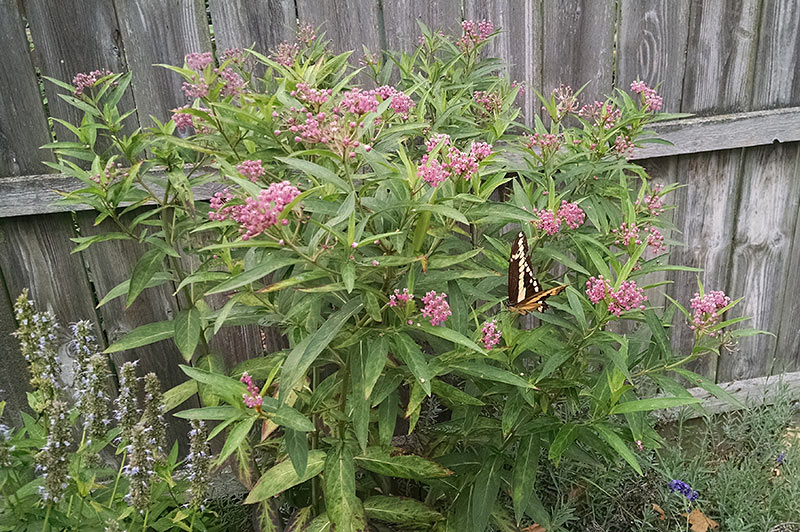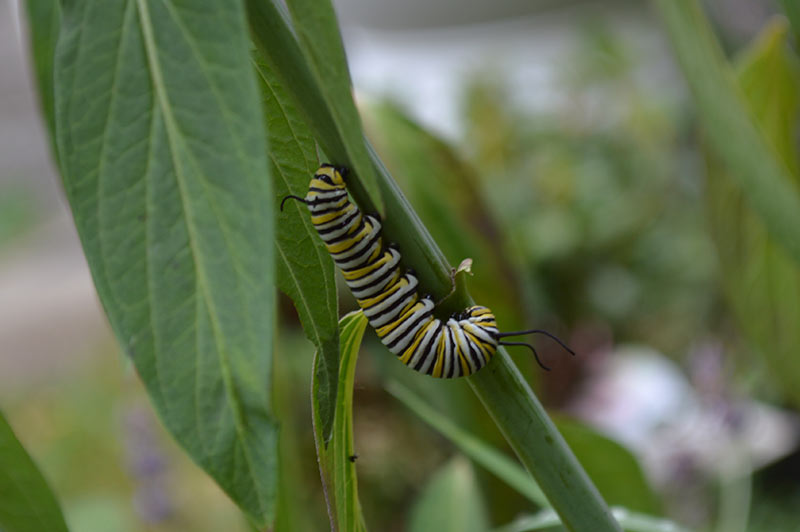October Bloom Day is here! By this time each season the garden seems to have gone wild and the amount of daylight required to maintain control is dwindling . (The gardener is also tired and beginning to eye her knitting needles.) Looking back last year, we had some warmer-than-normal weather in October. So far this year we’ve had a ton of rain in September after a hot, dry August. The lankier plants have been beat down by the heavy rains. The days are cooler and rainy, but there are still some “blooms” to be enjoyed on the Lot.
We can always count on the toad lily (Trycyrtis hirta) to bring some delicate speckles of color to the Lot in the Autumn. I’d like to find another fall-blooming plant to accompany this shade-loving perennial in the east bed near the foundation of the house.
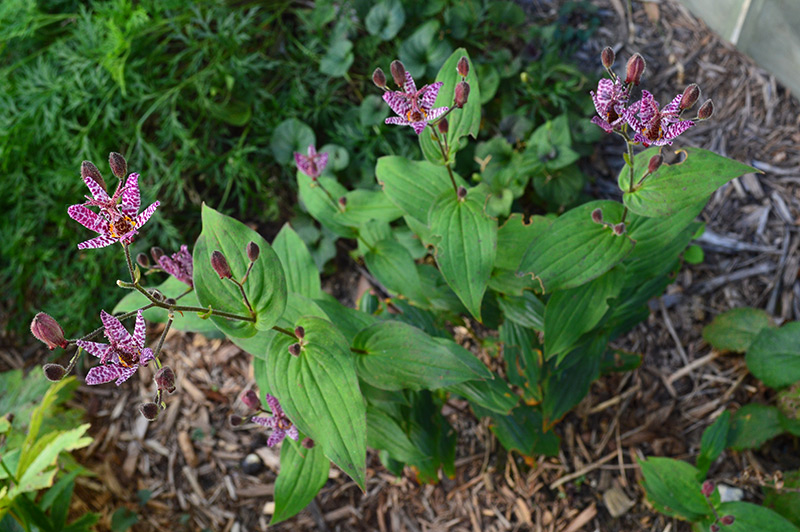
In the expanded bit of Loki’s bed, the swamp milkweed (Asclepias incarnata) is becoming streaked with color because of the cooler nights. The lavender it shares its bed with is still blooming and is way larger than the gardener had planned. Rats.

The new anemone is still carrying on its show from last month. I like the backdrop of the blue blooms of the plumbago. The silver foliage of the sage is pretty as well.
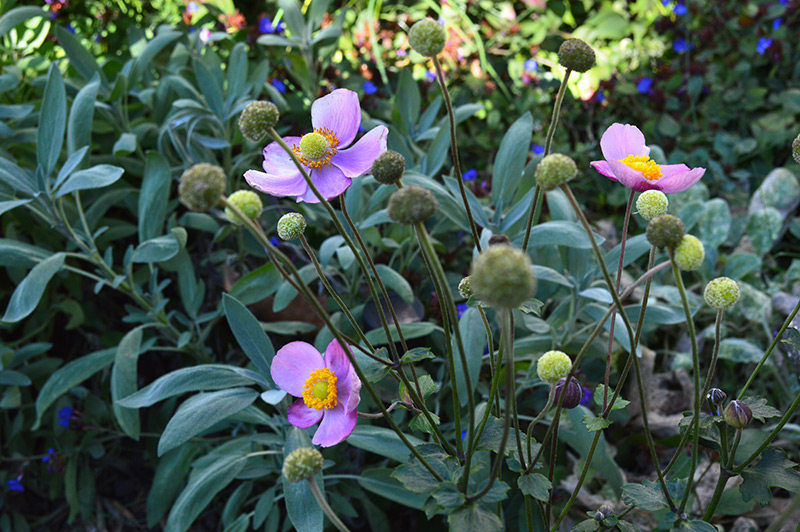
This joe pye weed (Eupatorium rugosum) is in its second year on the Lot. The white blooms look great with the darker stems of the plant. Apparently this cultivar grows to a max of 4 feet tall. I found this out just now as I looked up the latin name to post here. This must be why the plant is not growing to the 6 feet I expected. Oy with reading the plant tags! You’d think I’ve learned to do so by now!

This is more than likely the last, frazzled bloom of Echinacea purpurea ‘Butterfly Kisses,’ a dwarf coneflower.

Here’s a droopy aster I rescued from beneath the mum when we expanded the backyard bed this past Spring. I’m looking forward to seeing how it likes the new digs next season.

And here is another batch of aster currently peeking from beneath the foliage of a false indigo.

Here is the monster mum in the backyard bed. It has not been divided since it was planted. I was going to do so this Fall, but read the Spring is the best time to do so. Therefore, the task has been shifted to the Spring list.
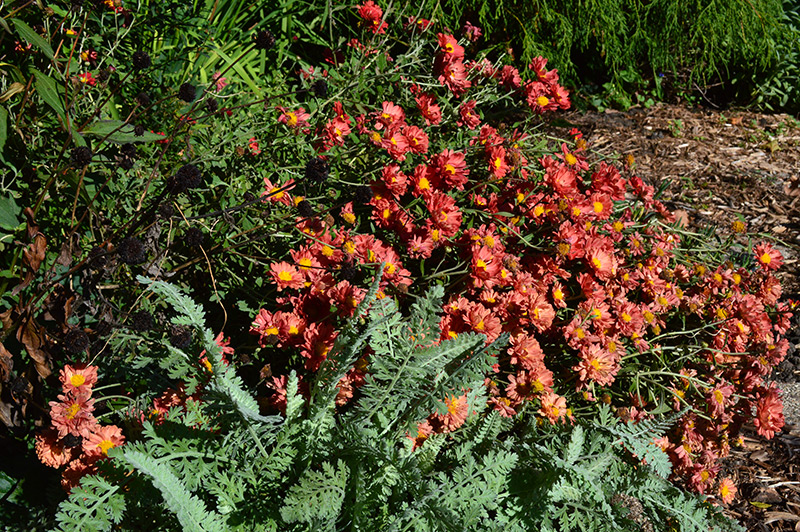
The next few shots aren’t necessarily blooms, but still some fun colors in the garden. The yew in the front South bed is covered in small red berries.

This year the rose at the southwest corner of the Lot was not pruned back, but allowed to form rose hips.

There are some other perennials still blooming on the Lot, including the various sedum and some coreopsis. Just fading are the snakeroot, heuchera, and the tall phlox.
Be sure to visit May Dreams Gardens to view all the other lovely blooms for this month!
